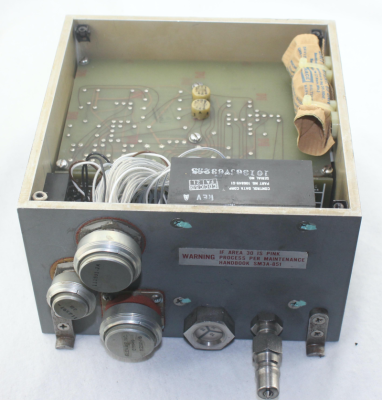We’re unabashed fans of [Ken Shirriff] here at Hackaday, and his latest post about an Apollo-era transistorized shift register doesn’t disappoint. Of course, nowadays a 16-bit shift register is nothing special. But in 1965, this piece of Apollo test hardware weighed five pounds and likely cost at least one engineer’s salary in the day, if not more.
 The incredible complexity of the the Apollo spacecraft required NASA to develop a sophisticated digital system that would allow remote operators to execute tests and examine results from control rooms miles away from the launch pad.
The incredible complexity of the the Apollo spacecraft required NASA to develop a sophisticated digital system that would allow remote operators to execute tests and examine results from control rooms miles away from the launch pad.
This “Computer Buffer Unit” was used to hold commands for the main computer since a remote operator could not use the DSKY to enter commands directly. Externally the box looks like a piece of military hardware, and on the inside has six circuit boards stacked like the pages of a book. To combat Florida’s notoriously damp conditions, the enclosure included a desiccant bag and a way to fill the device with nitrogen. A humidity indicator warned when it was time to change the bag.
There is a lot more in the post, so if you are interested in unusual construction techniques that were probably the precursor to integrated circuits, diode transistor logic, or just think old space hardware is cool, you’ll enjoy a peek inside this unusual piece of gear. Be sure to check out some of [Ken]’s previous examinations, from tiny circuits to big computers.
















“Engineer salary per day”?
More likely per month for such specialized test equipment manufactured individually in very small quantities.
You might want to reread that sentence Paul Try “in the day” (unless it was edited after your post)
“Engineer’s annual salary in the day”
I think you meant complexity in the second paragraph.
Fascinating and well researched and written article, thanks. And amazing control room photo just for testing… what things you can do when you have public funding!
Where do people buy such cool, old equipment?
I also want to know…
Wow. Just looked at the pictures, incredible how far (too far?) the technology went. Today that entire thing would be (much) smaller than a fingernail and would cost – if produced in quantity – almost nothing or just a little more if certified for aero/space/stuff. Incredible.
The amazing thing is what they were able to accomplish with such limited hardware. The spacecraft was built by men with slide rules and they had to invent the computer technology that made the lunar landing possible.
Yes, this is true of course. We can discuss if all this money for old and recent space stuff is well spent or not, but certainly those people in the 60′ did an incredible job. I read somewhere that all the computers used for the first moon landing had less processing power than a todays calculator!?